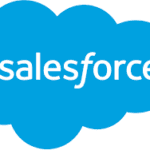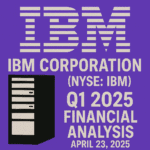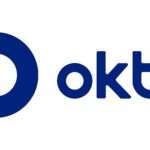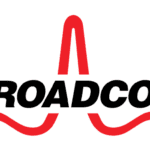Adobe, Inc. (ADBE) Stock Analysis
Adobe Inc. (NASDAQ: ADBE) Stock Analysis
Sector: Software & Technology
Analysis Date: (February 23, 2025
1. Company Overview
Adobe Inc. is a global leader in digital media and marketing software solutions, best known for its flagship products such as Photoshop, Illustrator, Acrobat, and its Adobe Creative Cloud, Document Cloud, and Experience Cloud services. Adobe provides creative, marketing, and document solutions to individuals, small and mid-size businesses, and large enterprises worldwide.
Strategic Highlights
- Recurring Revenue Model: Adobe has successfully transitioned to a subscription-based (SaaS) model, providing a steady and growing stream of recurring revenue.
- Broad Product Ecosystem: The company’s portfolio spans creative tools (Creative Cloud), document productivity (Acrobat, Document Cloud), and customer experience/marketing solutions (Experience Cloud).
- Continuous Innovation & M&A: Adobe invests heavily in R&D and strategic acquisitions (e.g., Figma) to expand its capabilities and address new market opportunities.
2. Financial Performance
a. Revenue & Growth
- TTM Revenue: $21.51 Billion
- Revenue Growth (YoY): +10.80% (TTM)
Analysis:
Adobe’s revenue continues to grow at a healthy double-digit pace, driven largely by robust subscription demand for its Creative Cloud and Experience Cloud offerings. Although growth has moderated somewhat compared to the pandemic-fueled surge, it remains solid for a large, established software firm.
b. Profitability
- TTM Net Income: $5.56 Billion
- EPS (TTM): $12.36
- Profit Margin (TTM): ~25.85%
Analysis:
Adobe’s net income and profit margin underscore its high-margin software business. With a ~26% profit margin, Adobe demonstrates strong pricing power and efficient cost management, typical of top-tier software providers.
c. Margins
- Gross Margin (TTM): 89.04%
- Operating Margin (TTM): 36.36%
Analysis:
An ~89% gross margin is characteristic of a software/SaaS model with relatively low marginal costs. Operating margin of ~36% is robust, reflecting the high-value nature of Adobe’s solutions and successful cost control. The shift to cloud subscriptions further stabilizes margins.
d. Free Cash Flow
- Operating Cash Flow (TTM): $8.06 Billion
- Capital Expenditures (TTM): -$183 Million
- Free Cash Flow (TTM): $7.87 Billion
Analysis:
Adobe generates significant free cash flow (~$7.87B), reflecting high recurring revenues, strong margins, and relatively modest capex needs. This substantial FCF fuels ongoing R&D, strategic acquisitions, and share repurchases.
3. Balance Sheet & Liquidity
- Cash & Short-Term Investments: $7.89 Billion
- Total Debt: $6.06 Billion
- Net Cash Position: $1.83 Billion (i.e., ~$4.20 per share)
- Equity (Book Value): $14.11 Billion
Analysis:
Adobe maintains a healthy balance sheet with a net cash position (~$1.83B) and moderate leverage (Debt/Equity ~0.43). Strong liquidity provides flexibility for potential acquisitions (e.g., Figma) and continued investment in growth.
4. Valuation
- PE Ratio (TTM): 35.95
- Forward PE: 21.77
- PS Ratio: 9.24
- EV/EBITDA (TTM): 22.80
- EV/FCF (TTM): 24.33
Analysis:
Adobe trades at premium multiples relative to many software peers, reflecting its strong brand, high recurring revenue, and robust margins. The forward PE (~22) suggests the market expects continued double-digit earnings growth, though macro uncertainties could influence near-term multiples.
5. Market Performance
- 52-Week Price Change: -18.01%
- Beta (5Y): 1.31
Analysis:
Adobe’s share price has declined ~18% over the past year, partly due to broader tech sector volatility and concerns around macro headwinds. However, the stock remains relatively resilient, given Adobe’s subscription-based model and market leadership in creative and digital marketing software.
6. Risks & Considerations
1. Competition & Innovation: While Adobe dominates creative software, emerging competitors (including startups and big tech) could pressure pricing or disrupt markets.
2. Regulatory Scrutiny of Acquisitions: Large M&A deals (e.g., the planned Figma acquisition) face regulatory reviews that may delay or block strategic expansion.
3. Economic Sensitivity: In a downturn, enterprises may slow software spending, impacting growth. However, Adobe’s subscription model provides some buffer.
4. Cloud Transition: Ongoing transitions in product offerings (e.g., new AI-driven features) require continuous innovation and successful user adoption.
5. FX & Global Exposure: Adobe operates globally; currency fluctuations and macro conditions in key regions can affect results.
7. Conclusion
Pros:
- Strong Recurring Revenue Model: High proportion of subscription revenue provides stable cash flow and margins.
- High Profitability & Cash Generation: 25-30%+ operating margins and significant free cash flow.
- Robust Balance Sheet: Net cash position (~$1.83B) and moderate debt allow for strategic flexibility.
- Market Leadership & Brand: Adobe’s Creative Cloud is the industry standard in design software, sustaining pricing power and user loyalty.
Cons:
- Premium Valuation: Elevated multiples (PE ~36, EV/EBITDA ~23) may limit near-term upside if growth moderates or if macro conditions worsen.
- Competition & Regulatory: Potential competition from new entrants or big tech expansions, plus regulatory scrutiny of large acquisitions, present uncertainties.
- FX & Macro Sensitivity: Global operations can face currency headwinds and economic slowdowns.
Final Note:
Adobe stands out for its high-margin, subscription-based software model, generating strong and consistent free cash flow. While it trades at premium valuations, Adobe’s brand leadership, product ecosystem, and robust financials may justify the multiples. Potential investors should monitor progress on AI/innovations, integration of acquisitions (e.g., Figma), and overall macro demand for creative and marketing software solutions.
Disclaimer:
This analysis is for informational purposes only and does not constitute investment advice. Investing involves risks, including the potential loss of principal. Always consult a qualified financial advisor before making investment decisions.






